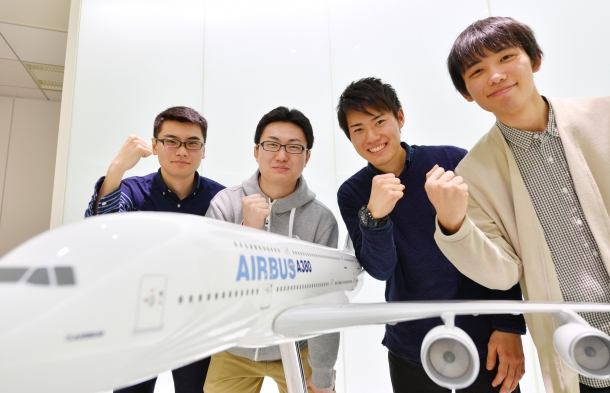Team Rotating Airport strives at world competition Fly Your Ideas 2017
Fri, Jun 30, 2017-
Tags
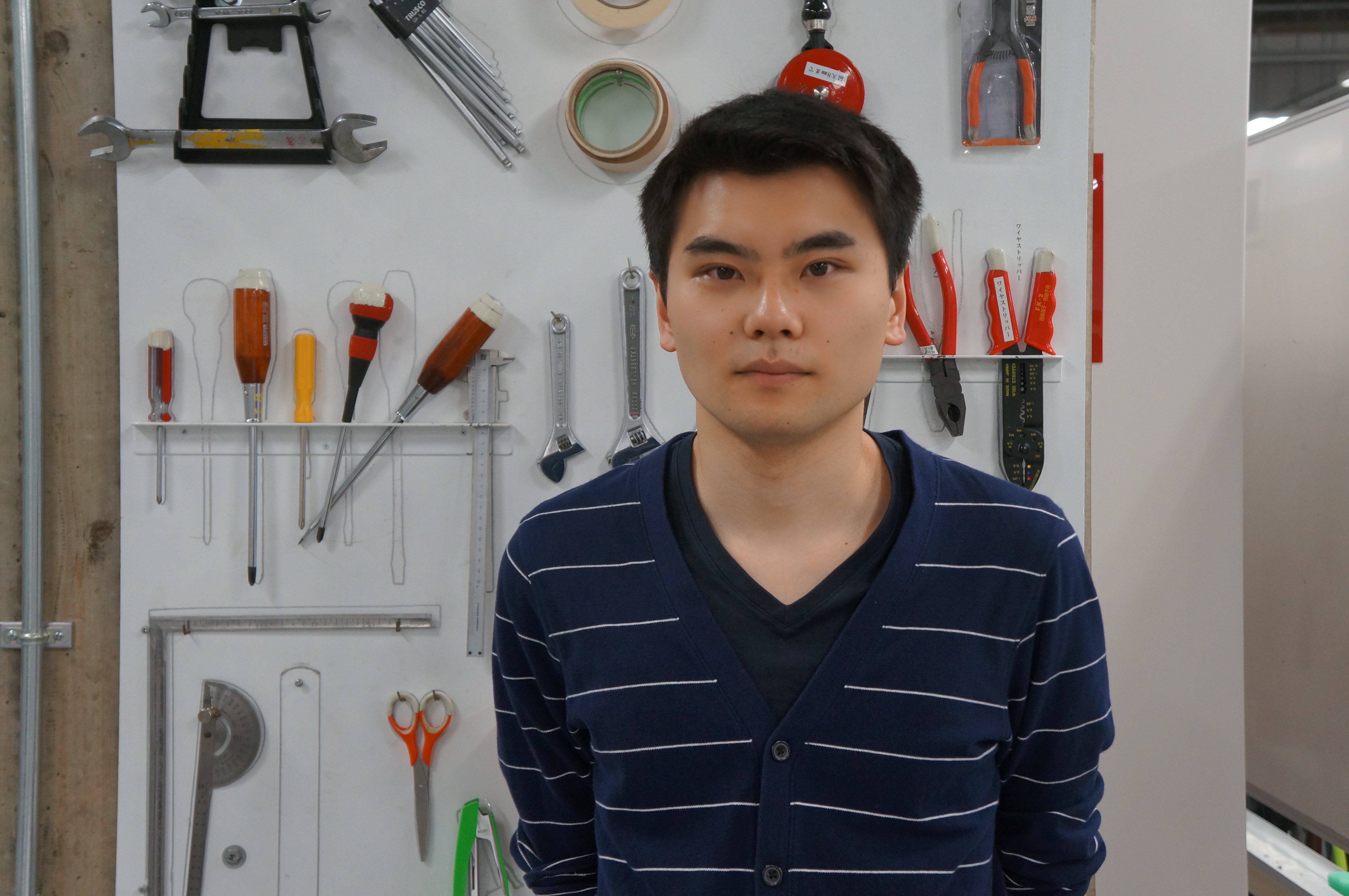
Kosei Kikuchi, fourth year study from School of Fundamental Science and Engineering
Kosei Kikuchi and his team from the School of Fundamental Science and Engineering was one of the 50 teams out of 356 participating teams across 89 countries that made it to the semi-final round of the worldwide competition, Fly Your Ideas 2017. The team Rotating Airport fought hard and had given their best but was just one step away from getting into the top five teams which made it to the finals. Fly Your Ideas is a world competition organized by aerospace manufacturing company Airbus once every two years and this is the fifth time the competition is held.
In this article, Kikuchi (the team leader of Rotating Airport) shares the valuable experience he had through participating in the competition.
Why did you decide to join Fly Your Ideas competition?
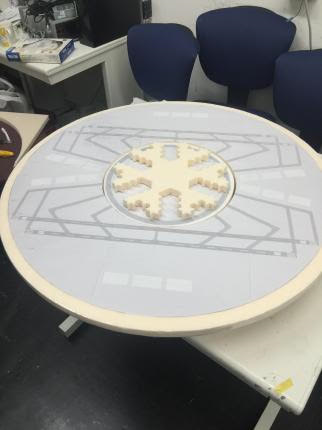
A prototype of Rotating Airport
When I was in my third year of studies, I joined Professor Tezuka’s Lab which concentrates on research related to air traffic control and airfoil of air carrier. One day, Professor Tezuka told me about the competition and suggested that I participate in it. I decided to give it a try and formed a team with my friends from the same lab.
We decided to name the team “Rotating Airport.” It is very common to encounter flight delays as airplane flights are heavily influenced by the weather. As such, we decided to focus on the biggest cause for flight delays – wind. As side wind affect taking off and landing, we came up with an idea that revolves building a rotating runway that could turn in a circle. The runway will turn to accommodate and be in line with the direction at which the wind is blowing to minimize delays due to side wind. Although traffic air control is not our main field of research, we think that our idea could bring about new future ideas on this field such as spurring research on new effective systems and ways of controlling air traffic.
What challenges did you and your team face in the process?
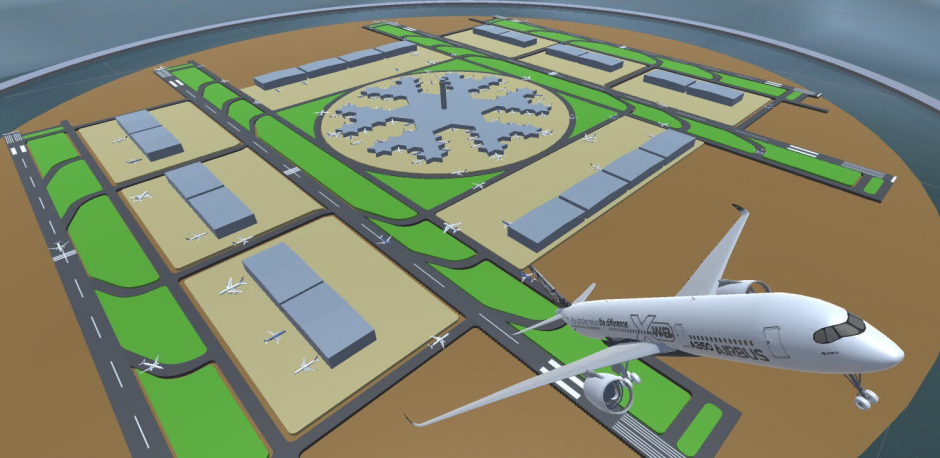
An illustration on how the runway will turn to face the direction of the wind.
The biggest challenge we faced was that we had to use English throughout the competition. All inputs and outputs such as documentation and presentation were all conducted in English, which is not our native language. There were many times we felt that we could have explained things better and clearly if the competition were conducted in Japanese. A technical expert from France visited and gave advice to each team that made it to the semi-final round. However, as we were not used to listening to English and the speed at which the advisor spoke was really fast, we had a hard time communicating with one another. In the light of the experience gained, I felt a need to improve my English proficiency and started studying hard for the Test of English as a Foreign Language (TOEFL) examination.
What did you learn from participating in the Fly Your Ideas competition?
After participating in the competition, I have learned to appreciate the joy and difficulties of creating things from scratch. Coming up with something entirely new is different from just adding or making improvement to what has already been established. In the midst of creating a prototype that illustrates our idea, we faced many setbacks. Having said so, this very process of having to face and confront these challenges is interesting and intriguing, and I learned to appreciate the joy of working towards a common goal with my team.
Unfortunately, our team was not able to make it to the finals. After a thorough analysis, we believed that the biggest reason why did not made it into the top five lies in the feasibility of realizing our idea. The finalists had all done an in-depth research on the current needs of and challenges faced by the aviation industry. The proposed ideas were all at potential proposals cover the implementation stage. They had even come up with road-maps needed for implementation. We were really impressed by them and we feel that we could use their ideas as references for our future research.
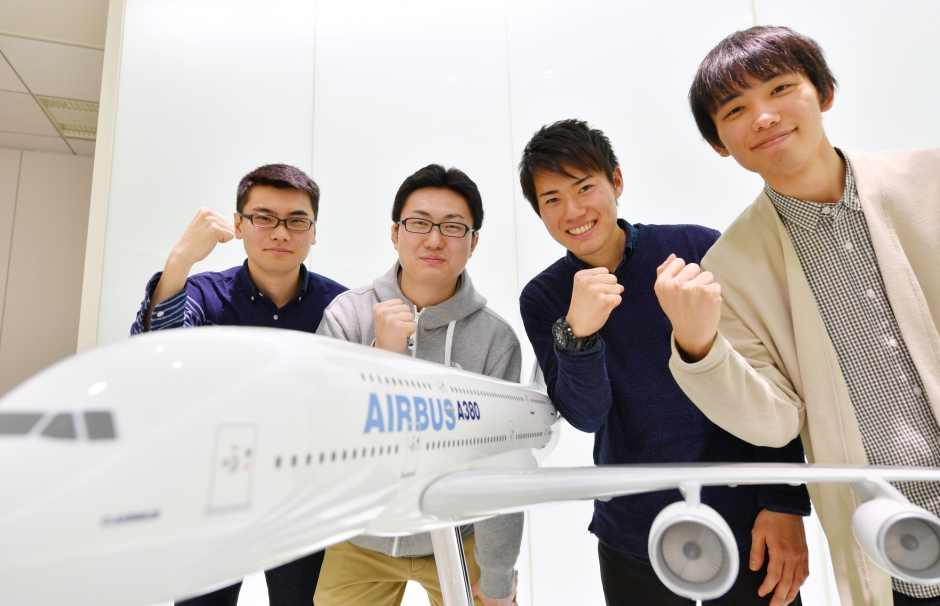
Members of team Rotating Airport. Kikuchi is the student on the extreme left.
What are you plans after graduation?
Since young, I have always had a love for airplanes and machines, and I would often visit museums to see them. After entering high school, I learned how to think and examine how the things I like work, and on which fundamental principles they are based on from physics and chemistry classes. And after entering university, I learned about the processes of how researchers do research and how they come up with new technology and system. Through participating in the competition, I feel that I have gained a deeper understanding on these processes. Currently, I am doing research on how to produce airfoils with better performance through computational fluid dynamics (CFD) analysis. I want to make use of the experience I had from the competition and continue my research at graduate school.
What are you future goals?
When I was in junior high school, I heard stories of Hayabusa whose project team refused to give up kept trying and eventually succeeded in making it land on an asteroid and then take off again back to earth. One of my goals is to be part of this developmental team and develop a space probe that can be used to help explore the space. In order to attain my goal, I think there are many things I still need to study hard on now.
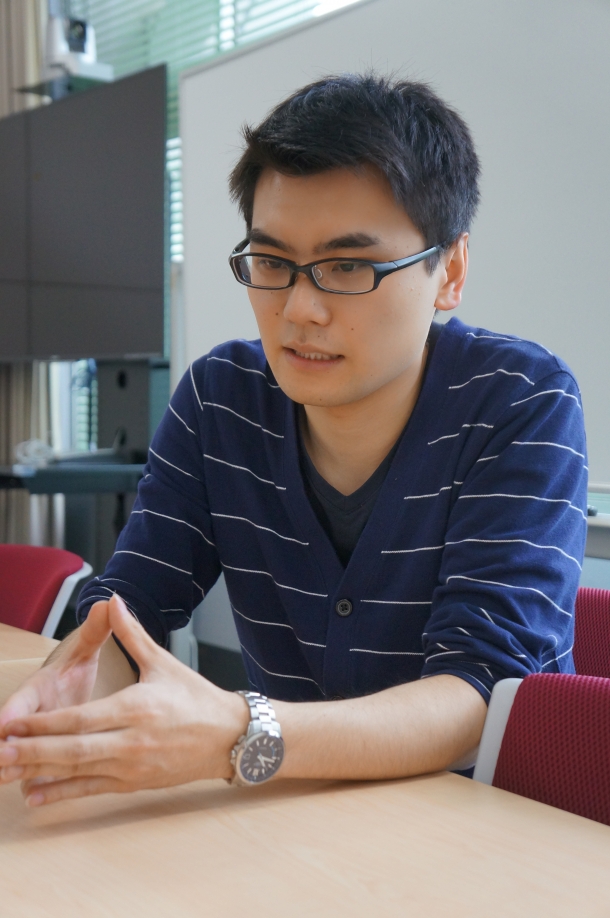 Profile
Profile
Kosei Kikuchi was born in Ibaraki Prefecture. When he was preparing for his university entrance examination, he was not very sure if he should pursue his studies in aerospace engineering. As such, he feels that the program offers by the School of Fundamental Science and Engineering at Waseda University is really great because students get to study the basis in their first year and only declare their major in their second year. In his second year, Kikuchi chose to further his studies with a major of Applied Mechanics and Aerospace Engineering.


